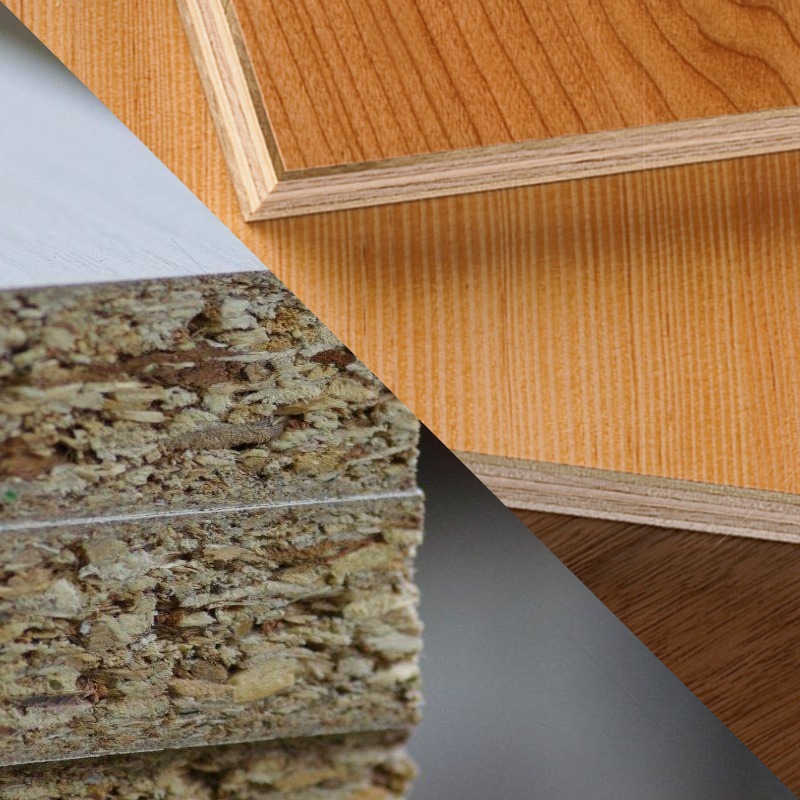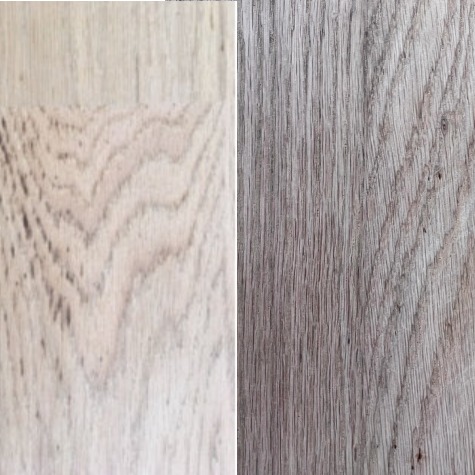Imagine a sunlit Bay Area living room, minimalist and serene. A low wooden coffee table with a subtle grain sits at the center, its warm tones inviting you to touch and admire. The space feels calm yet cozy – a hallmark of Japanese-style modern interiors. As a mid-career professional or busy homemaker in the Bay Area, you appreciate this blend of simplicity and natural beauty. But when it comes to actually choosing the right hardwood for that high-end Japanese-inspired furniture or built-in, where do you start?
In this friendly guide, we'll wander through the forest of options – from quarter-sawn white oak to rich walnut – and demystify terms like Janka hardness and rift-sawn grain. By the end, you’ll feel like you’re chatting with a savvy friend over coffee, ready to pick the perfect wood for your dream piece.
The Allure of Japanese-Style Modern Furniture
Japanese-style modern (and its cousin “Japandi” – Japanese + Scandinavian) design emphasizes simplicity, craftsmanship, and a deep connection to nature. One key aspect is the use of natural materials like wood, stone, and bamboo, which bring warmth and authenticity to minimalist spaces. Think of low-profile tables, platform beds, or built-in cabinets with clean lines and visible wood grain. Every board tells a story. The right wood choice can make a piece sleek and modern while still warm and inviting.

Japanese Style Cultue Illustration
In Japanese culture, wood has long been cherished – from cedar soaking tubs to delicate shoji screens. Marrying that with Bay Area sensibilities (tech-forward and eco-conscious) means we seek sustainability and longevity in our furniture. A solid hardwood piece, crafted with care, isn’t just furniture – it’s an investment and maybe a future heirloom. Now, let’s meet some star hardwoods and see how their characteristics align with this aesthetic.
Meet the Hardwood All-Stars for High-End Furniture
Every wood species has its own personality – color, grain, hardness, even scent. Below are key players best suited for Japanese-style or Japandi interiors. These woods are premium, durable, and beautiful, each in its own way. Whether you’re drawn to light, airy vibes or rich, dark tones, there’s a wood for you.
Quarter-Sawn White Oak: The Elegant Zen Master
If woods were characters, quarter-sawn white oak would be the wise artisan – calm, strong, and full of subtle beauty. White oak is known for its superb durability and tight, straight grain. When it’s quarter-sawn, this oak reveals magical “ray fleck” patterns – a shimmering figure like tiny tiger stripes hidden in the grain. These flecks give quarter-sawn oak a unique texture that translates to a refined, linear look. The color of white oak ranges from pale grayish-tan to light brown, sometimes with a hint of olive in a natural finish. It takes stains well, but many Bay Area homeowners now love it in a natural matte finish to appreciate its organic look.

GRAIN PATTERN: HOW A BUILDER SEES A LOG
Why it fits Japanese-style: White oak’s straight grain and subtle patterns exude a quiet elegance. It’s strong and stable – quarter-sawn boards resist warping and cupping over time – ideal for the clean lines of low benches or long shelves. Oak has been a common choice in Japanese and Japandi furniture because of its strength and natural beauty. Picture a built-in oak media console with sliding panels, the grain providing visual interest without overpowering the room. It’s a classic that balances zen-like restraint with hearty durability.
Red Oak: The Familiar Workhorse with a Warm Hue
Red oak might be White Oak’s more outgoing cousin – slightly less hard, with a prominent grain and a friendly, reddish tone. Red oak is plentiful in North America and often used in flooring and furniture. Its grain is typically open and bold, with “cathedral” arch patterns in plain-sawn boards and a coarse texture. The wood’s color tends to be a light tan with pinkish or red undertones that deepen with certain finishes.
Why it fits Japanese-style: In many high-end modern designs, red oak takes a backseat to white oak simply because designers lately prefer the whiter, less busy look of white oak. However, red oak can absolutely work in a Japanese-inspired interior, especially if you plan to use a stain. Its grain can add a bit more visual texture, which can be an intentional choice if the rest of your décor is very minimal.
Mahogany: The Luxurious Classic
Mahogany has a long history in fine furniture for good reason. Revered for its rich reddish-brown color and fine, even grain, mahogany is somewhat softer than oak or maple but very stable and carvable. The grain of mahogany can be straight but often shows lovely ribboning or interlocking patterns that catch the light. Over time, mahogany deepens to a warm, reddish hue that just says “quality.”
Why it fits Japanese-style: Mahogany’s deep color offers a beautiful contrast in a light, minimalist space. The key is to use mahogany sparingly as an accent in modern Japanese interiors, so it doesn’t overpower the calm vibe. A mahogany countertop on a built-in credenza could add warmth and a touch of formal elegance to an otherwise simple design.
Maple: The Light and Versatile Beauty
Hard maple is pale, creamy in color with a fine, uniform texture. It’s very hard and has a tight grain that can sometimes show fun figure like bird’s-eye or curl, though often it’s straight and subtle. Maple’s hardness means it resists dents, making it great for furniture that sees a lot of use.
Why it fits Japanese-style: In Japanese interiors, lighter woods are very popular for creating that zen, airy atmosphere. Maple fits the bill perfectly with its soft white to light tan color. Use it for a dining table or custom cabinets if you crave a bright, modern look.
Walnut: The Sophisticated Statement
Walnut often steals hearts in the showroom. American black walnut is a darling of modern high-end furniture, admired for its deep chocolate-brown hue and elegant grain. The heartwood can range from light brown to a rich dark brown, often with a purplish or chocolate hue. Walnut’s grain is usually calm, with occasional curls that are considered beautiful, not chaotic.
Why it fits Japanese-style: Walnut’s dark tone brings contrast and drama to a minimalist space. It embodies a kind of understated luxury. Even a small walnut accent, like the legs on a sofa or a lamp made from walnut, adds richness. Despite its bold color, walnut’s grain is usually calm enough to not feel “busy.”
Other Premium Hardwoods to Consider
Beyond the “big five” above, there are a few other all-star hardwoods you might encounter, especially in custom furniture:
Cherry: A favorite in fine furniture, cherry wood starts as a pinkish-brown and darkens to a richer reddish brown over time. It has a smooth, satiny grain and a 950 Janka hardness(similar to soft maple). Cherry is great for a softer, warm look – perhaps a low Japanese-style platform bed in cherry, which will glow as it ages. It’s a nice mid-point between the pale maples and dark walnuts, color-wise. And like in a good story, cherry changes with time (developing a lovely patina in sunlight).
Teak: Originally used in mid-century Danish and also traditional Japanese outdoor furniture, teak is famous for its golden brown tone and oily, rot-resistant nature. It’s about as hard as walnut (around 1000 Janka) but extremely durable in wet conditions. Teak can be quite expensive, but for a Zen garden bench or a bathroom accent, it brings an authentic spa-like vibe. Its color will lighten to a driftwood gray if left unfinished outdoors, but indoors it stays a beautiful honey brown. (Fun fact: teak was listed as a common wood in Japandi style too.)
Cedar & Cypress: These are softer woods (not as hard on the Janka scale) but used traditionally in Japan (e.g. hinoki cypress baths). They have wonderful fragrance and resist decay. For built-ins, they might be too soft, but for accent pieces or closet linings, they add a heavenly scent of nature. In a Japandi context, you might see cedar in rustic stools or side tables, valued more for the connection to nature than for hardness.
Ash: Similar in appearance to oak, ash has a light beige color and bold grain. It’s quite hard (~1320 Janka, close to white oak) and has been used in many modern furniture pieces. Ash could be a good alternative if you like oak’s properties but want a slightly different look (ash grain tends to be straighter, with less ray fleck). It takes dye well, so sometimes ash is ebonized (stained black) for a Japanese lacquer look, while still showing wood texture.
Bringing It All Together: Crafting Your Dream Piece
We’ve journeyed through forests of oak, walnut groves, and maple stands – now it’s time to bring this knowledge home. How do you make a decision and ensure it fits your Japanese-inspired, high-end interior?
First, reconnect with your vision. Close your eyes and picture your space with that new furniture or built-in. Is it light and zen, or does it have a bold focal point? Do you see delicate straight grains, or maybe a darker accent that grounds the room? Your emotional response can guide you.
Ultimately, choosing a wood is a personal decision, a blend of head and heart. Whether you opt for the elegance of quarter-sawn white oak, the warmth of mahogany, or the rich sophistication of walnut, your furniture will be a true reflection of your style and values. Happy decorating, and may your home be filled with the beauty of wood and the spirit of craftsmanship!
Start designing your very own Japanese-Style piece right now!
(Collaborated with Wood Wise AI)



